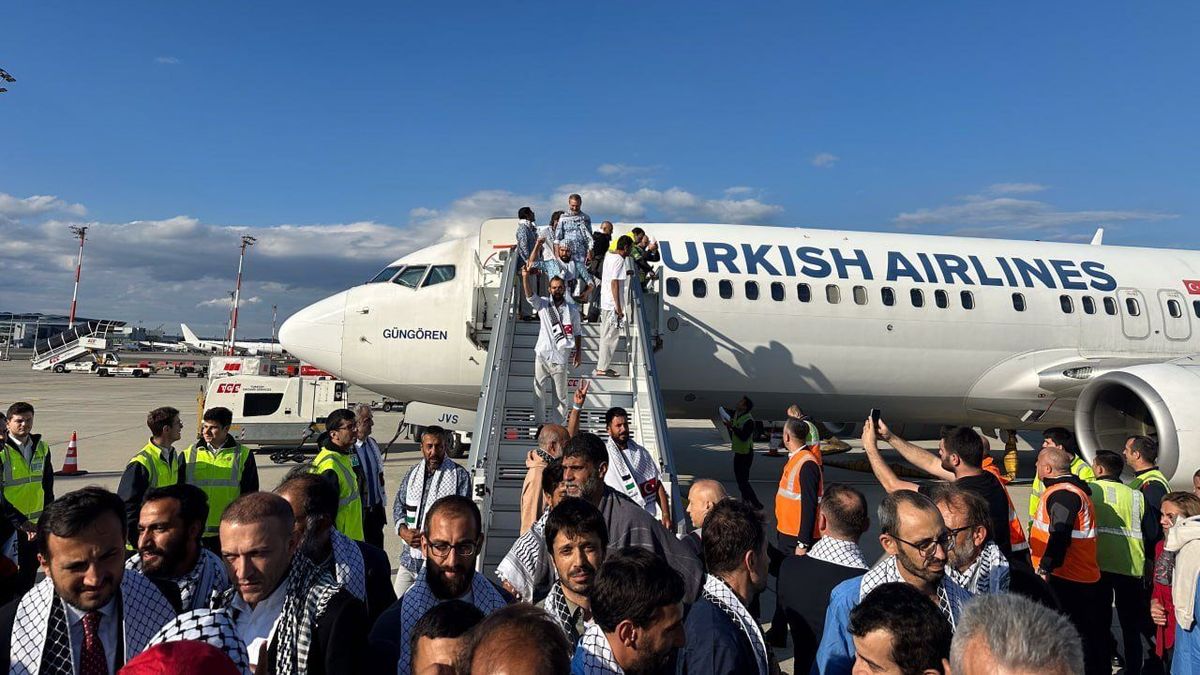By bus and train across the whole country for 49 euros a month: This has been possible for a year with the Deutschlandticket. When the offer was launched in May 2023, expectations were high.
It may come as a surprise that an industry called “local public transport” (ÖPNV) is associated with revolutions. But the then Hessian Transport Minister Tarek Al-Wazir was not the only one who described the Deutschlandticket as such when it was introduced almost a year ago. His North Rhine-Westphalian colleague Oliver Krischer (both Greens) did not want to follow this comparison on Thursday. But Krischer also had to admit on Thursday at a balance sheet press conference in Cologne that the 49-euro subscription has thrown public transport into disarray.
He described the offer, which has made nationwide travel on local and regional buses and trains since May 2023 – for 49 euros a month, with no long-term minimum terms, as an “absolutely successful model”. After the political decision, the industry, with its dozens of transport associations and confusing tariff structures, quickly put this model into practice.
Since then, around 11.2 million customers have used the subscription per month on average, as the Association of German Transport Companies (VDV) announced on Thursday. More than half of them have had the ticket from the start. At least eight percent of users were won over to public transport through the offer. Most people already had a subscription and switched to the cheaper option.
So that the ticket can be financed for companies at all, the federal and state governments each add half of the amount to three billion euros per year. A debate has been raging for months about making these funds available in the long term and permanently securing the ticket. The Federal Transport Minister is also in favor of making the offer permanent. However, the federal government’s funding commitments currently only apply up to and including 2025. There is only a price guarantee for users for this year. The monthly price could increase from 2025.
Critics would prefer to see the money invested in expanding the infrastructure and expanding public transport services anyway. Because it has not yet been able to keep up with the increasing demand as a result of the Germany ticket. On the contrary.
“Getting into very difficult waters”
“We are in very difficult financial waters with public transport,” said VDV President Ingo Wortmann on Thursday. The reason for this is the increased operating costs and, last but not least, the recent collective agreements, which led to higher personnel expenses for companies. “It is a fact that our costs are increasing and transport companies are thinking about having to limit the offer, purely for monetary reasons,” emphasized Wortmann.
He reiterated calls for increased regionalization funds with which the federal government supports the states in providing public transport. “We have to get the issue going now, otherwise we will end up with a Pyrrhic victory: We will then have a great ticket, but buses and trains run less frequently.”
While the Deutschlandticket generally makes local and regional transport cheaper for users, it has not yet been able to meet some expectations. So far, there has hardly been any standardization of the public transport industry as such. There are no known mergers of transport associations, reported VDV Vice President Knut Ringat.
In addition, there are still large regional differences with regard to the services on offer, he criticized. In some regions, taking bicycles on buses and trains is generally free, while in others you need additional tickets. In a city in the Stuttgart transport network, accompanying persons could also be taken with the Germany ticket for a small additional charge, although this should actually be excluded.
The Deutschlandticket was actually intended to end the nationwide tariff confusion in the associations. In order for them to dare to standardize, a long-term financing commitment for the Deutschlandticket is necessary, said Ringat.
Another important requirement has also not been met: despite the high demand for the Deutschlandticket, the environmental impact of the subscription remains manageable from the industry’s perspective. “What the Deutschlandticket has not yet achieved is making a contribution to getting more people out of their cars and into local public transport,” said VDV President Wortmann. To do this, you need significantly more new customers who previously had no contact with public transport.
There would have to be around a third of new customers so that the offer would be accompanied by a noticeable shift in traffic that would contribute to the climate goals. The VDV has always pursued the goal of increasing the total number of monthly subscription customers to 15 million. After all: According to user surveys by the VDV, around 16 percent of those who have the subscription drive their cars less often. In view of these developments, the Germany ticket is still a long way from the original hopes, even of a revolution.
Source: Stern




